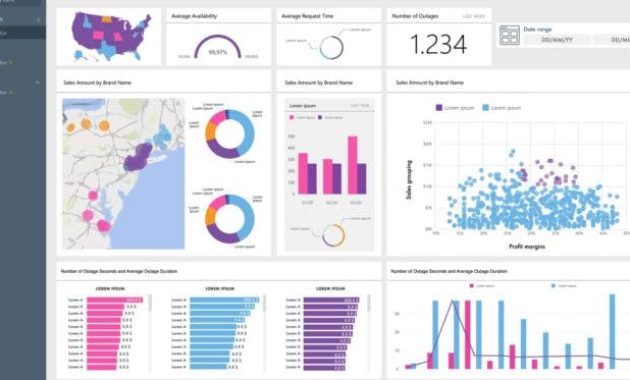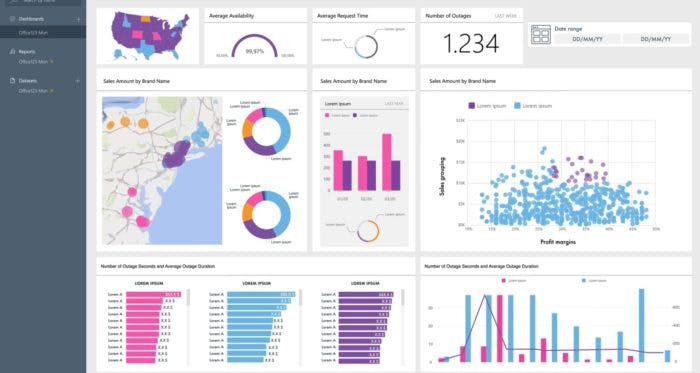
How 8 Business Intelligence Tools You Can’t Ignore
In today’s data-driven world, businesses are swimming in information. The ability to make sense of this data, glean insights, and make informed decisions is critical for success. This is where business intelligence (BI) tools come in. These tools transform raw data into actionable intelligence, empowering organizations to optimize operations, improve customer experiences, and drive revenue growth. This article will explore eight business intelligence tools that are essential for any business looking to gain a competitive edge. These are tools you simply can’t ignore.
The Power of Business Intelligence
Business intelligence tools are more than just dashboards and reports. They are comprehensive platforms that integrate data from various sources, analyze it, and present it in a way that is easy to understand. This allows businesses to:
- Identify trends and patterns
- Make data-driven decisions
- Improve operational efficiency
- Enhance customer satisfaction
- Gain a competitive advantage
The benefits of using business intelligence tools are numerous. By leveraging these tools, businesses can make smarter decisions, reduce costs, and increase profitability. But with so many options available, choosing the right tools can feel overwhelming. This guide will help you navigate the landscape and identify the tools that best fit your needs.
Essential Business Intelligence Tools
Here are eight business intelligence tools that are considered indispensable in today’s business environment. They represent a range of capabilities, from data visualization to advanced analytics. Each tool has its strengths and weaknesses, so consider your specific needs when making your selection.
Tableau
Tableau is a leading data visualization and business intelligence tool. It is known for its user-friendly interface and powerful analytical capabilities. Tableau allows users to create interactive dashboards and reports that can be easily shared and accessed across an organization. It’s a favorite among businesses for its ability to quickly explore data and uncover hidden insights. Tableau’s drag-and-drop interface makes it accessible to users with varying levels of technical expertise. Its robust features provide the flexibility to create detailed visualizations.
Microsoft Power BI
Microsoft Power BI is another prominent business intelligence tool, particularly popular due to its integration with the Microsoft ecosystem. Power BI offers a wide range of features, including data preparation, data modeling, and data visualization. It is a cost-effective solution for businesses of all sizes, offering both desktop and cloud-based versions. Power BI is known for its strong data connectivity options and its ability to handle large datasets. Its integration with other Microsoft products makes it easy for businesses to leverage existing tools and infrastructure.
Qlik Sense
Qlik Sense is a self-service business intelligence tool that emphasizes data discovery and exploration. It uses an associative data model that allows users to explore data in a more intuitive way. Qlik Sense offers a range of features, including data visualization, data storytelling, and advanced analytics. Qlik Sense is known for its ease of use and its ability to help users uncover hidden insights in their data. Its associative model differs from traditional BI tools. This approach allows users to discover unexpected connections within their data.
Looker
Looker is a modern business intelligence tool that focuses on data modeling and data governance. It allows businesses to create a single source of truth for their data, ensuring consistency and accuracy across the organization. Looker is known for its powerful data modeling capabilities and its ability to integrate with a wide range of data sources. Its emphasis on data governance makes it a good choice for businesses that need to ensure data quality and compliance. Looker provides a collaborative platform. This allows for a data-driven culture.
Sisense
Sisense is a business intelligence tool that focuses on providing actionable insights to business users. It offers a range of features, including data preparation, data visualization, and data analytics. Sisense is known for its speed and performance, allowing businesses to analyze large datasets quickly. It is also known for its ease of use and its ability to deliver insights to a wide range of users. Sisense’s in-memory technology allows for fast data processing. This makes it ideal for real-time analytics.
ThoughtSpot
ThoughtSpot is a search-driven business intelligence tool that allows users to ask questions about their data in plain language. It uses artificial intelligence (AI) to understand user queries and provide relevant insights. ThoughtSpot is known for its ease of use and its ability to democratize data analysis across an organization. It is particularly well-suited for users who are not data experts. ThoughtSpot’s search-based interface allows for quick exploration. Users can quickly find the answers they need.
Domo
Domo is a cloud-based business intelligence tool that provides a comprehensive view of a business’s data. It offers a range of features, including data integration, data visualization, and data collaboration. Domo is known for its ease of use and its ability to connect to a wide range of data sources. It is a good choice for businesses that need a centralized platform for managing their data. Domo’s mobile capabilities allow for data access on the go. Domo’s focus on collaboration fosters a data-driven culture.
Zoho Analytics
Zoho Analytics is a business intelligence tool that is part of the Zoho suite of business applications. It offers a range of features, including data visualization, data analysis, and reporting. Zoho Analytics is known for its affordability and its ease of integration with other Zoho products. It is a good choice for small and medium-sized businesses that are already using Zoho applications. Zoho Analytics is a great option for businesses seeking a cost-effective and integrated BI solution. It offers a user-friendly interface. It also provides robust analytics capabilities.
Choosing the Right Tool
Selecting the right business intelligence tool is crucial for maximizing your data’s value. Consider the following factors when making your decision:
- Your Data Sources: Ensure the tool integrates with your existing data sources.
- Your Technical Expertise: Choose a tool that aligns with your team’s skill set.
- Your Budget: Consider the cost of the tool, including licensing and implementation.
- Your Business Needs: Determine the specific insights you need to gain from your data.
- Scalability: Select a tool that can grow with your business.
By carefully evaluating these factors, you can select the business intelligence tool that best meets your needs. This will enable you to unlock the power of your data.
Implementation and Beyond
Implementing a business intelligence tool is more than just installing software. It requires careful planning, data preparation, and user training. Here are some key steps to ensure a successful implementation:
- Define Your Goals: Clearly outline what you want to achieve with the tool.
- Prepare Your Data: Ensure your data is clean, accurate, and ready for analysis.
- Choose the Right Tool: Select the tool that best fits your needs.
- Train Your Users: Provide adequate training to ensure users can effectively use the tool.
- Monitor and Optimize: Continuously monitor the tool’s performance and make adjustments as needed.
Once you have successfully implemented a business intelligence tool, the journey doesn’t end there. You must continuously monitor and optimize the tool’s performance. You must also adapt to changing business needs. By staying proactive, you can ensure that your business intelligence tool continues to deliver value for years to come.
Conclusion
In conclusion, business intelligence tools are essential for any business seeking to thrive in today’s data-driven world. The eight tools highlighted in this article represent a diverse range of capabilities. They cater to different needs and budgets. By carefully considering your requirements and selecting the right tools, you can unlock the power of your data and gain a significant competitive advantage. Don’t ignore these powerful tools. Embrace them, and transform your data into your greatest asset. [See also: How BI Tools Drive Business Growth] [See also: Choosing the Right BI Tool for Your Business]

